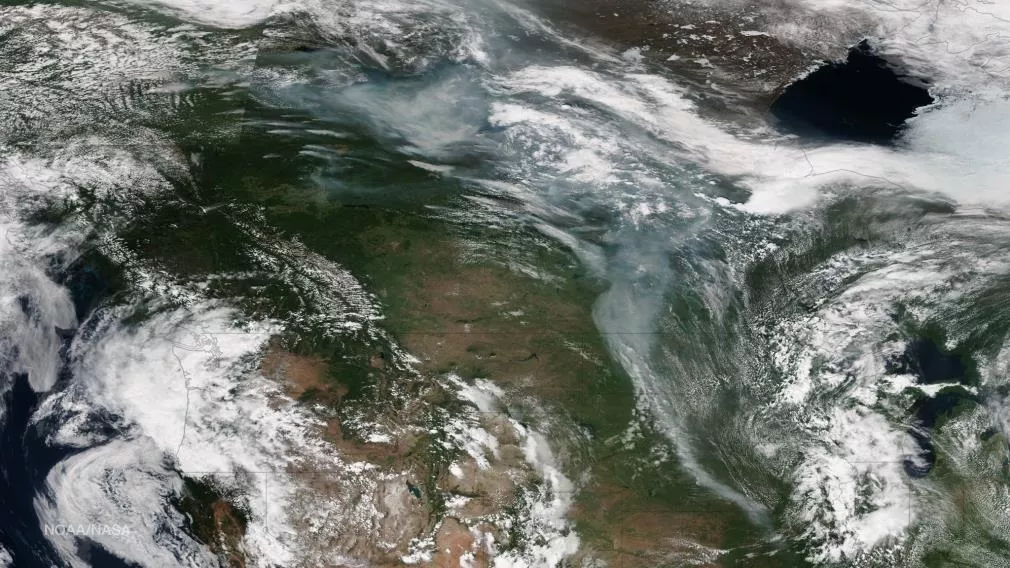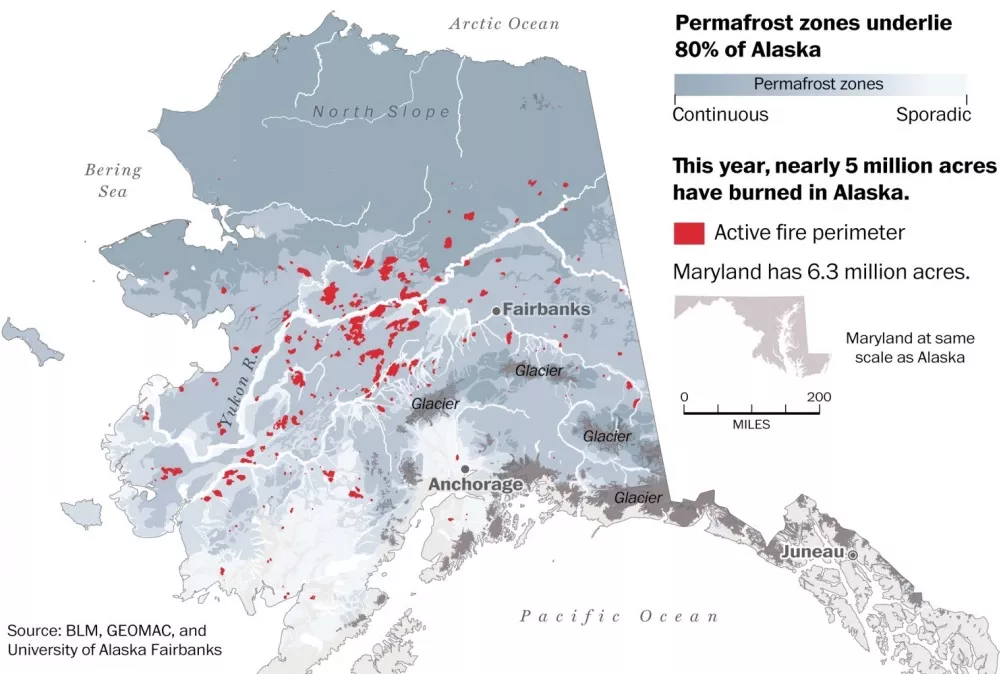5.1 million acres have burned in Alaska in 2015. It’s the second highest total on record, eclipsed only by the devastating 2004 fire season, which left more than six million acres burned. And the number of acres burned keeps climbing.
Firefighters with the Alaska Fire Service (AFS) are having a rough time of it, to say the least. With few roads to reach many remote areas, the AFS has to use aircraft to provide supplies to ground crews. But the large drifting smoke plumes can make air travel a hazard, further complicating the ability to deliver supplies to areas in need. That is why forecasters, using data from JPSS satellites, are helping the AFS stay on top of weather conditions that trigger fires and track the resulting smoke drifting across the state.
For two weeks during the month of July, JPSS satellite liaison Eric Stevens from the Geographic Information Network of Alaska (GINA) was embedded with AFS.
"Alaska is very data-sparse, so imagery from satellites helps fill an important need,” said Stevens. “Polar-orbiting satellites like the JPSS series provide very frequent coverage at high-latitude locations like Alaska, so there is a lot of good data to work with."

This image of smoke stretching from fires in Alaska and Canada was captured by the VIIRS instrument on the NOAA/NASA Suomi NPP satellites on June 29, 2015. Credit: NOAA Visualization Lab.
Because of the close working relationship between JPSS and AFS, access to operational NOAA satellite data today is better than ever before. In fact, the Visible Infrared Imaging Radiometer Suite (VIIRS) instrument that flies on satellites in the JPSS constellation is now a key contributor to the satellite data products that provide critical observations of fire and smoke across the state.

Credit: University of Alaska, Fairbanks
